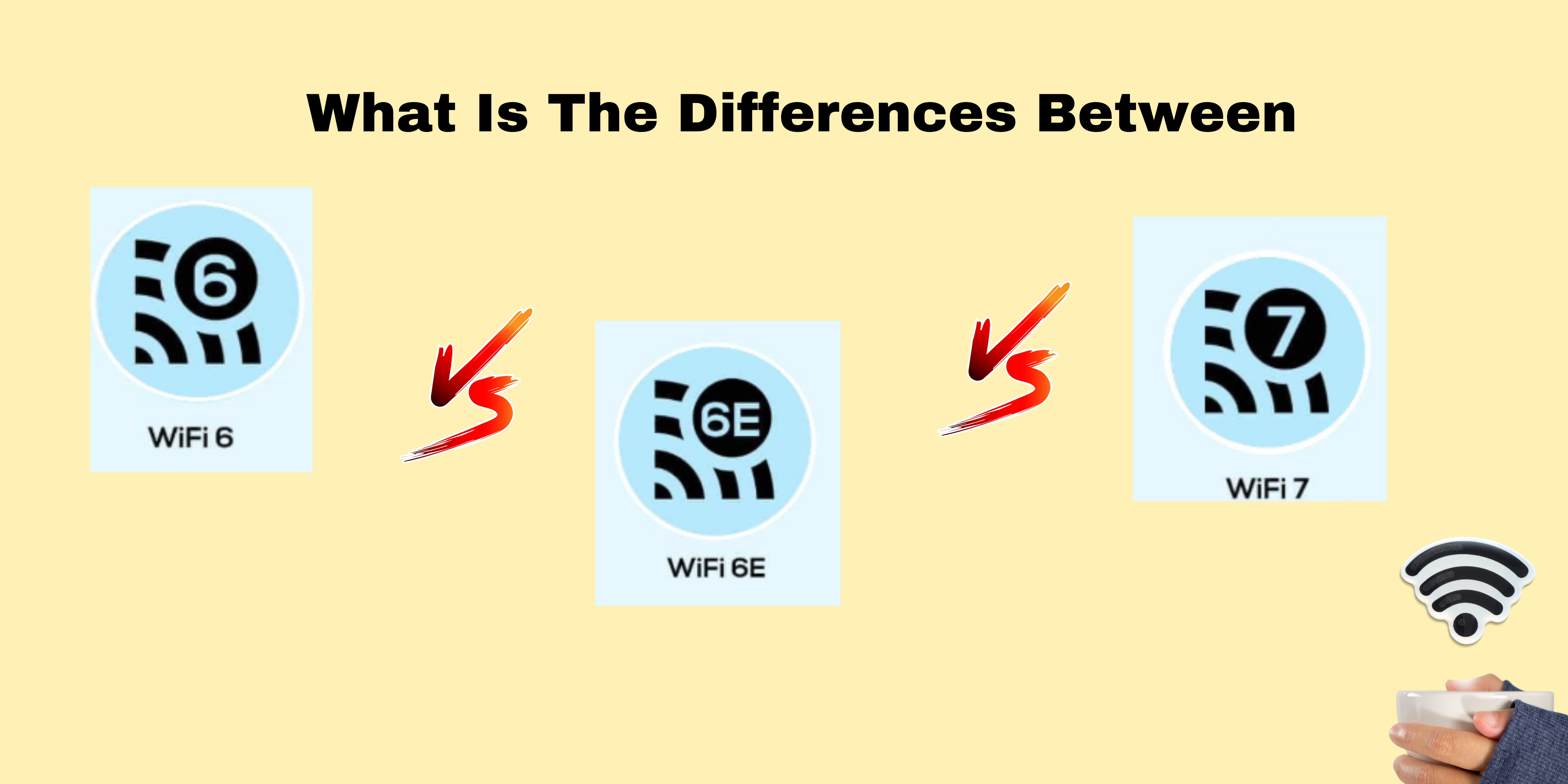The world of wireless networking continues to evolve at a rapid pace, with new standards emerging to meet the growing demands for faster speeds, better reliability, and lower latency. Among the latest advancements, Wi-Fi 6, Wi-Fi 6E, and Wi-Fi 7 stand out as critical milestones in the journey toward better connectivity. But what sets these standards apart? Let’s break down their differences.
Wi-Fi 6: The Foundation of Modern Connectivity
Wi-Fi 6, also known as 802.11ax, was introduced to address the growing number of connected devices in homes, offices, and public spaces. It focuses on improving efficiency, capacity, and performance in crowded environments.

Wi-Fi 6E: Extending the Spectrum
Wi-Fi 6E builds on the foundation of Wi-Fi 6 by extending support to the 6 GHz band, offering more spectrum and reducing congestion.


Wi-Fi 7: The Future of Wireless Connectivity
Wi-Fi 7, or 802.11be, represents the next leap in wireless technology. Though still in development, it promises unprecedented speed, capacity, and low latency.

Anticipated Release:
-
Expected to roll out commercially in 2025, with devices gradually adopting the standard.
Comparison Table
| Feature | Wi-Fi 6 | Wi-Fi 6E | Wi-Fi 7 |
|---|---|---|---|
| Speed | Up to 9.6 Gbps | Up to 9.6 Gbps | Up to 46 Gbps |
| Bands | 2.4 GHz, 5 GHz | 2.4 GHz, 5 GHz, 6 GHz | 2.4 GHz, 5 GHz, 6 GHz |
| Channel Width | Up to 160 MHz | Up to 160 MHz | Up to 320 MHz |
| Latency | Low | Lower | Ultra-Low |
| Multi-Link Support | No | No | Yes |
| Release Year | 2019 | 2020 | 2025 (expected) |
Which One Should You Choose?
-
Wi-Fi 6: A solid choice for homes and businesses looking to upgrade their networks with improved efficiency and capacity.
-
Wi-Fi 6E: Best for environments where the 6 GHz band is available, offering reduced congestion and better performance for high-bandwidth applications.
-
Wi-Fi 7: Future-proofing your network with unmatched speeds and reliability once devices become widely available.
As technology advances, the distinctions between these standards highlight how each iteration builds upon the last. Whether you're streaming 8K content, engaging in AR/VR experiences, or preparing for the next wave of connected devices, understanding these differences ensures you're ready to make the most of modern wireless networking.












